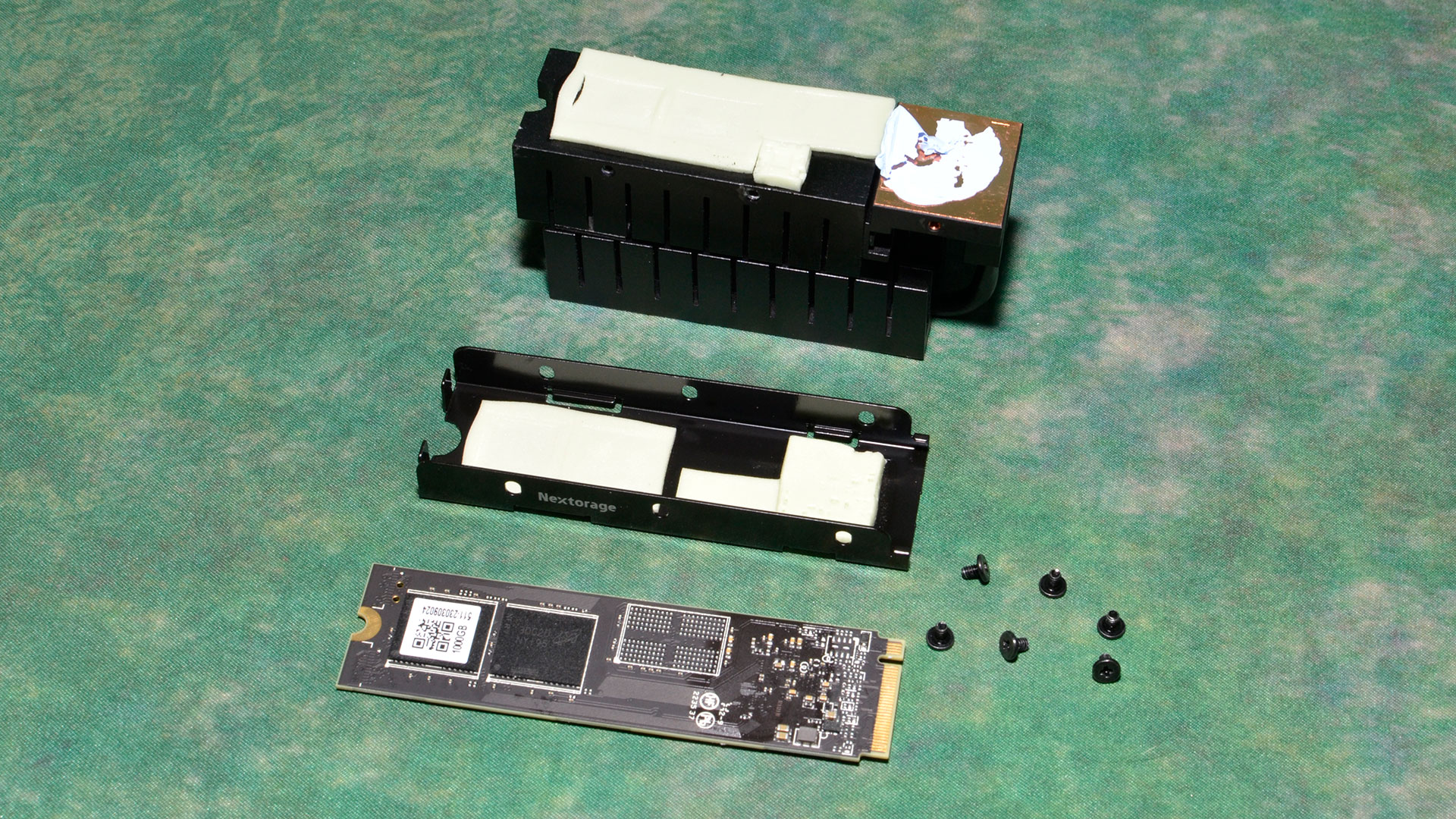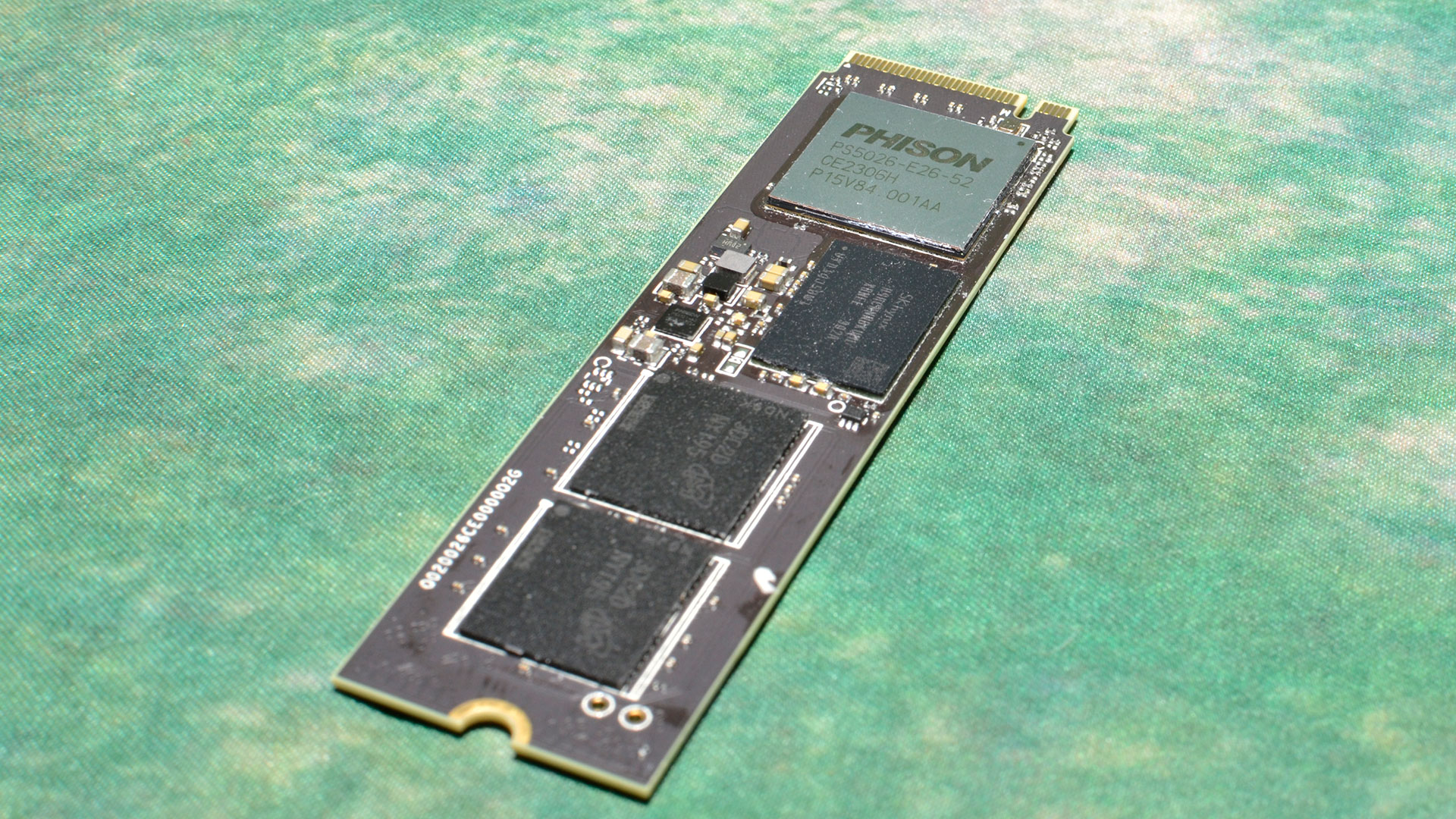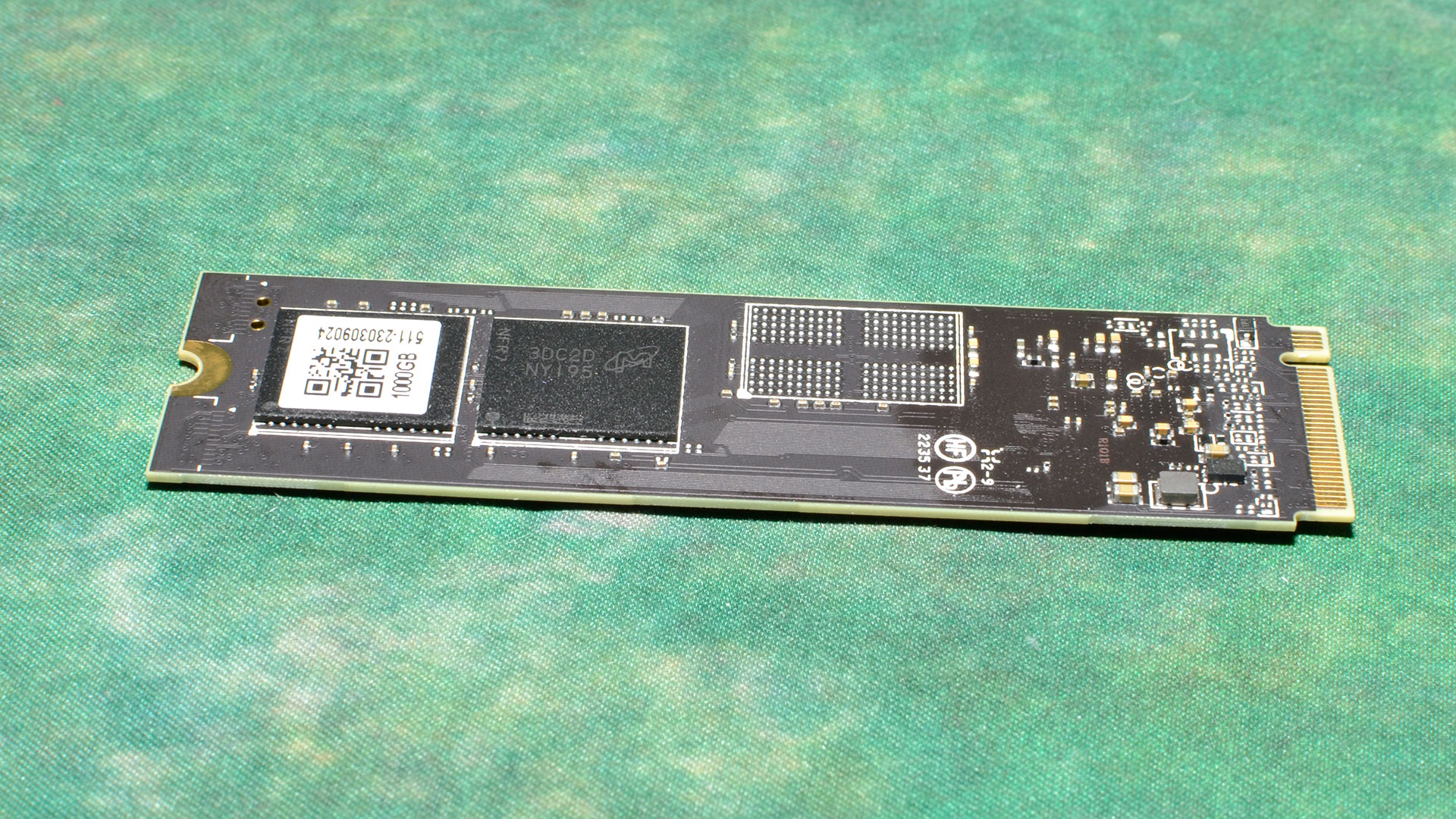Tom's Hardware Verdict
The NE5N is a well-performing PCIe 5.0 NVMe SSD with excellent built-in cooling. It doesn’t quite reach its potential at 1TB, but it would be a reasonable choice at 2TB for bandwidth enthusiasts.
Pros
- +
High all-around performance
- +
Excellent cooling
Cons
- -
A little lackluster at 1TB
- -
Poor power efficiency
- -
Relatively expensive
Why you can trust Tom's Hardware
The Nextorage NE5N is one cool cucumber, a fast PCIe 5.0 NVMe SSD with a distinctive voluminous heatsink that helps push new levels of bandwidth. It’s faster than any 4.0 SSD on the market and remains remarkably cool while achieving those marks. The brand name is not the most recognizable, especially as Nextorage has its origins in producing drives for the PlayStation 5, but there has been a real effort to expand its portfolio. The drive tested today is just 1TB, distinct from our other PCIe 5.0 reviews with 2TB samples, allowing for a deeper analysis of how much capacity matters for newer flash used in the very fastest consumer SSDs.
If you haven’t heard of Nextorage, it began life as Sony subsidiary Sony Storage Media Solutions Corporation (SMSS) while being a joint venture with Phison. Phison designs the SSD controllers used in many drives, including all early PCIe 5.0 SSDs. The company has since acquired shares from Sony and is now effectively producing its own drives, including the NE5N. The origins make sense, as the Nextorage NEM-PA was designed for the PS5. However, it’s evident that the NE5N is made for high-end desktops, and the company already has a higher-tier version in the works.
This does not mean that the NE5N has any special sauce under the hood, but rather, it’s a competing product in the high-end SSD storage space that can fill its own niche. In this case, the heatsink clearly stands out. It could be an alternative to the Gigabyte Aorus 10000, although that drive can go bare. It lacks the fan of the reference design, as used on the Inland TD510, which is a positive in our book. This makes the NE5N an interesting choice for certain sustained workloads, but ultimately, it comes down to your needs and market pricing.
Specifications
| Product | 1TB | 2TB | Header Cell - Column 3 |
|---|---|---|---|
| Pricing | $169.99 | $289.99 | |
| Form Factor | M.2 2280 | M.2 2280 | |
| Interface / Protocol | x4 PCIe 5.0 | NVMe 2.0 | x4 PCIe 5.0 | NVMe 2.0 | |
| Controller | Phison E26 | Phison E26 | |
| DRAM | LPDDR4 | LPDDR4 | |
| Flash Memory | 232-Layer Micron TLC | 232-Layer Micron TLC | |
| Sequential Read | 9,500 MB/s | 10,000 MB/s | |
| Sequential Write | 8,500 MB/s | 10,000 MB/s | |
| Random Read | 1,300K | 1,400K | |
| Random Write | 1,400K | 1,400K | |
| Security | AES 256-bit | AES 256-bit | |
| Endurance (TBW) | 700TB | 1400TB | |
| Part Number | NE5N1TB/FHHE | NE5N2TB/FHHE | |
| Warranty | 5-Year | 5-Year |
The Nextorage NE5N is available at 1TB and 2TB capacities with current pricing of $169.99 and $289.99, respectively. This is pretty close to the baseline when compared to the ADATA Legend 970 and similar drives, but it is somewhat expensive for what you get, so it is recommended to wait for sales. Of course, the NE5N has a unique heatsink that might help it stand out for certain builds or workloads that need extra cooling.
The drive can reach 10,000 / 10,000 MB/s for sequential reads and writes and 1,400K / 1,400K IOPS for random read and write IOPS. The warranty is standard at five years with 700TB of writes per TB capacity. It also does have TCG OPAL encryption support, thanks to its controller.
Software and Accessories
Nextorage offers a download of Acronis True Image OEM for backups and cloning on its site. We recommend CrystalDiskInfo to extract health information from your drive.
A Closer Look




The NE5N has what appears to be a pretty effective heatsink, including ample thermal padding and a copper interface for the controller. Throttling will not be an issue for this drive as it has a two-deck cooling solution with heatpipe technology. Contact is quite good for all of the major components. We would recommend not removing the heatsink.
Get Tom's Hardware's best news and in-depth reviews, straight to your inbox.




This is the standard layout for a Phison E26 SSD, although some things are noteworthy. Nextorage lists the DRAM cache as DDR4 on its site, but it’s actually LPDDR4. This helps reduce power draw by a small amount and is the most common configuration with Phison E26 SSD controllers. The cache is more than ample, providing 2GB of DRAM for just 1TB of flash. Although otherwise unremarkable, the 1TB sample allows us to test this hardware with fewer than the normal amount of dies.
MORE: Best SSDs
MORE: Best External SSDs and Hard Drives
MORE: How We Test HDDs And SSDs
MORE: All SSD Content

Shane Downing is a Freelance Reviewer for Tom’s Hardware US, covering consumer storage hardware.
-
computerbob44 Can anyone show me a Motherboard that this can be used with ???Reply
I am sure it is a great drive, but I really think the useability needs to be mentioned and put on the "con" side.
Maybe I am missing something ? -
hotaru251 Reply
i mean all of these tall heatsink have same issue with GPU compat.computerbob44 said:Can anyone show me a Motherboard that this can be used with ???
But some MB's do have m.2 at very bottom of pcie slots and even soemtimes on the bottom right of board where these would work.
But I do agree any m.2 heatsink that can't fit in the top m.2 under GPU needs a con. -
CRamseyer Maybe you guys haven't seen a modern motherboard from the Z790 or X650E families. Motherboard makers have moved the Gen5 SSD slot to above the first PCIe slot to allow for increased heatsinks and virtually unlimited vertical space for coolers.Reply
https://www.asrock.com/mb/AMD/X670E%20Taichi/index.asp
This is one of my favorites. It ships with a flat passive heatsink for the Gen5 drive and also an active (with fan) heatsink that is PWM controlled. Users can choose which to use but the tall active heatsink does a great job and is silent.
Most consumer motherboards from this point on will have at least 1 M.2 slot above the first PCIe slot.
